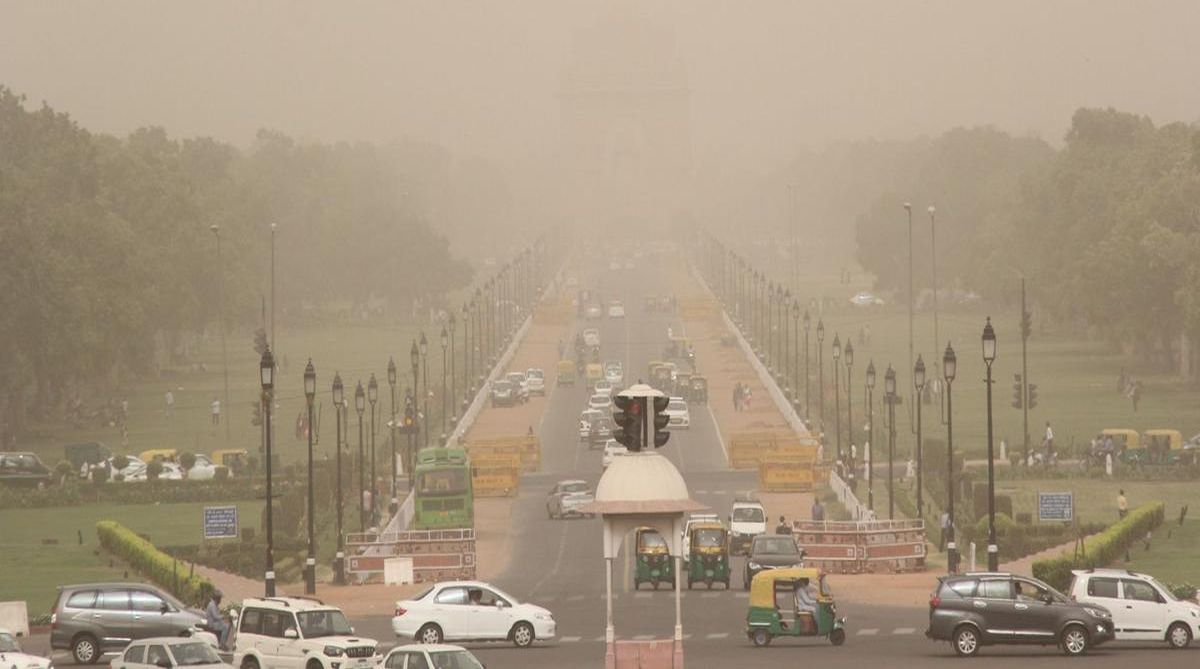BJP calls AAP’s denial of medicine to Kejriwal claim a stunt
Delhi BJP President Virendra Sachdeva said the AAP is trying to gain sympathy for the jailed Delhi chief minister through the claim.
Amarinder cited “hard facts” to rubbish Kejriwal’s statement, which he trashed as yet another attempt by the Delhi CM to divert public attention for his own government’s abysmal failure on all counts.

Delhi air pollution (Photo: IANS)
With Delhi Chief Minister Arvind Kejriwal blaming stubble burning in Punjab for abnormal increase in pollution level in the national Capital, Punjab CM Amarinder Singh on Sunday said data suggests Delhi’s pollution results from its own sources.
Ridiculing Kejriwal’s claim the stubble burning in Punjab was solely responsible for the high levels of pollution in Delhi, Amarinder cited “hard facts” to rubbish Kejriwal’s statement, which he trashed as yet another attempt by the Delhi CM to divert public attention for his own government’s abysmal failure on all counts.
To begin with, the Punjab CM pointed out that the Air Quality Index (AQI) of Delhi remains more than 300+ even during December and January every year, when there is no stubble burning in the neighbouring states.
Advertisement
This clearly indicates that New Delhi’s environment is impacted by its own sources, which are predominantly vehicular emission, construction activities, industrial activities, power plants, burning of municipal solid waste and sweeping activities, he added.
Further, the CM pointed out that as per the latest report of air pollution forecast by Weather Research and Forecasting Model of the India Meteorological Department, winds over Delhi-NCR had changed from north-westerly to easterly, so there was hardly any influence from crop fires in Punjab and Haryana.
“Yet Delhi’s air quality continued to be “very poor” which was caused mainly from local vehicular and industrial emissions,” Amarinder said.
Due to decrease in the temperature and wind velocity, the pollutants in the atmosphere are unable to disperse, which is the major cause of increase in the AQI at most places in north India.
In particular, New Delhi AQI crosses the 400 mark due to high emissions from activities of a large population in a confined area of NCR and inversion phenomenon of the climate. During October 2018, the wind velocity became static and decreased to less than two kilometre per hour, Amarinder further pointed out, referring to available scientific data.
Amarinder asserted that had stubble burning been the reason for Ambient Air Quality deterioration then it should have impacted the air quality index of the cities of Punjab in the first place.
However, it had been observed that the average AQI of Punjab during October 2018 was 117, while the average AQI of Delhi hovered around 270. Most of the cities in Punjab have witnessed clear climate with long distance visibility, in sharp contrast to Delhi, he added.
As far as stubble burning incidents was concerned, he said that the number of such cases till 3 November was 25,394 against 30,832 reported last year – clearly showing a decreasing trend.
Advertisement